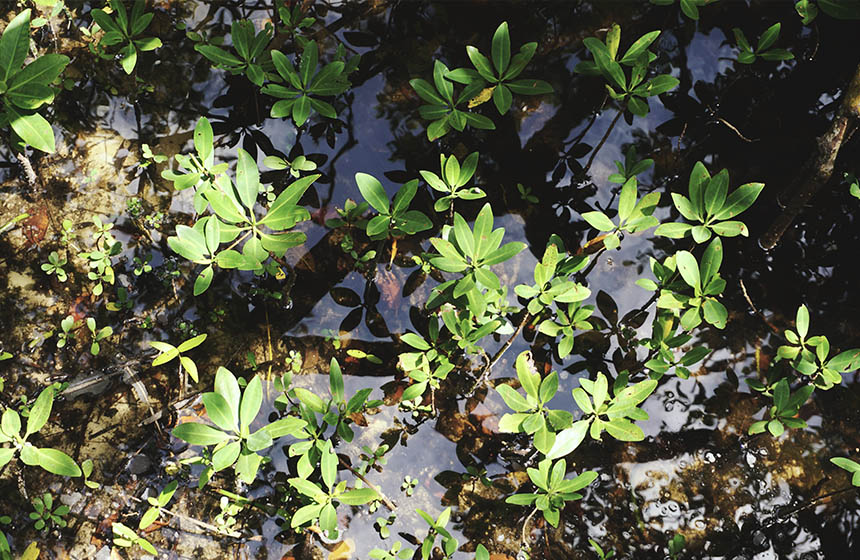Community-based mangrove restoration
Community-based mangrove restoration across several villages contributed to disaster risk reduction and protected key habitats for aquatic and terrestrial species.
Nature-based Intervention:
Facilitated by the Gujarat State Forest Department and Gujarat Ecology Commission, community-based mangrove restoration was adopted across several villages along the Gulf of Kutch region in Gujarat. The project promoted a multi-stakeholder model involving private and public sector partners and placed a particular emphasis on community-based implementation.
Overview of context and outcomes:
Gujarat state boasts the largest mangrove habitat on the western coast of India. However, it has been severely diminished and degraded by human and natural causes. A weakened mangrove ecosystem not only threatens biodiversity but reduces natural protection against cyclones and storm surges, whose impacts are expected to worsen as a result of climate change.
Case effectiveness on
Climate change
Although not quantified or reported, it is likely that the type and scale of afforestation reported in the region will contribute to climate change mitigation.
73.6% of households surveyed reported that mangrove reforestation had helped reduce the negative impacts of cyclones. 50% of households also reported a reduction in crop damage and destruction due to the wind shelter provided by restored mangrove cover.
Ecosystem health
Ecological effect: PositiveReforestation across participating villages in Gujarat resulted in a total of 8,326 hectares of new mangrove cover. Although not quantified or reported, this degree of replanting will likely contribute to restoring biodiversity through the provision of habitats for aquatic and terrestrial species.
Socioeconomic outcomes
As a result of mangrove planting, local economies reported a 31.5% increase in income from fisheries. On average, remuneration from mangrove planting work contributed 8,735 Indian rupees to participating households.
Governance
This project used a multi-stakeholder governance model where community-based mangrove restoration groups worked with the Gujarat State Forest Department and Gujarat Ecology Commission to successfully implement and manage the restoration.
Finance
This project was funded by the India-Canada Environment Facility.
Monitoring and evaluation
Monitoring has taken place in the local communities, including household surveys in order to assess the perceived benefits provided by the mangrove forest.
Trade-offs and limitations
Due to differences in socio-economic conditions and livelihood structure, some members of the local community do not perceive the intervention as successful when compared to other members of the community.

Intervention type
- Restoration
Ecosystem type
- Mangroves
Climate change impacts addressed
- Wind damage
- Coastal inundation
- Storm surge
Instigators
- State/district/local government agency
- Research institutions
Societal challenges
- Biodiversity conservation
- Climate change adaptation
- Disaster risk reduction
- Economic and Social development
- Food security
Outcomes
- Food security: Positive
- Water security: Not reported
- Health: Not reported
- Local economics: Positive
- Livelihoods/goods/basic needs: Not reported
- Energy security: Not reported
- Disaster risk reduction: Positive
- Rights/empowerment/equality: Not reported
- Conflict and security: Positive
- No. developmental outcomes reported: 5
Resources
Read resource 1Read resource 2
Read resource 3
Literature info
- Grey literature



